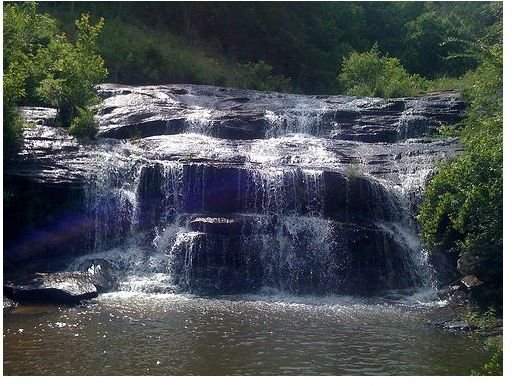Choosing Geocache Locations
Before you ever step out into the world to place your cache make sure that the site you have chosen meets the following criteria; it is in a public place (or on private land WITH the owners permission), it is hidden but not so well that the cacher will have trouble finding it, it is in a safe place and the location will be memorable. Although some of these ideas may seem like common sense, when you sit down to brainstorm it’s amazing what you might leave out. These tips are like waypoints on your journey to creating a cache.
Use Places You Have Been
The first tip seems the most obvious but is often overlooked. Choose a spot that you are intimately familiar with. Perhaps it’s a favorite fishing hole or a place to watch a beautiful sunset, maybe a unique tree or animal home in the forest (I’ve hidden a cache near a massive beaver dam). The only requirement here is that the spot has something utterly unique about it, something that you wouldn’t come across in your daily routine.
One of the primary concerns of geocaching is conservation so it follows that rare natural phenomenon and particularly beautiful areas are often the sites of caches. One thing to remember is that, no matter how nice a place looks, if there is a chance that bringing too many people to it may result in damage to the area, then it is best to not use it. This also goes for the placing of the cache itself. You should not do any physical harm to the area (digging too deep, cutting down trees, etc.). Place your cache in an area that is accessible but not obvious. This may require building a small shelter around it if it is in an area like a desert (a nice rock pile would work in such an area).
Talk to Locals/Historians
Find an area that has historical significance to the community. This could be the site of a famous battle, the home of a famous historical figure or even a place where something tragic once happened. The best place to find something like this in your community is to talk to a local historian or search the microfiche section in your local library. Back issues of the local paper are often treasure troves of their own.
Get Out There and Hike
Get out there and get hiking. Sometimes the best place to put a cache is someplace you’ve never seen before. Avoid the well worn paths, like Robert Frost said, “take the path less traveled by” as it may make all the difference. There are places that most people have never seen and these are precisely the places that a cache make sense. A cache is a secret shared between you and the finder, a special place to share and be shared. The goal is to invite a someone to a place that they would never have seen and you want it to be something spectacular (lest the cacher feel cheated).
Think Like a Pirate
This tip might not seem to fit in with the others but this one can be fun. When pirates were looking for someplace to bury their treasure they often left clues to help them remember the exact location even decades later. This often meant using natural features of the land to point to the location of the treasure. These could be cliffs that point in a general direction, a particular rock formation on the ground or a fork in a stream.
If you think about your cache like this and leave waypoint clues for cachers it can make the journey as much fun as the actual finding of the cache. It’s like finding a whole bunch of mini treasures on the way to the big one.
Using these tips to help you determine your next geocache location will assure that it is one that your cachers will remember and perhaps suggest to their friends, and after all isn’t that watch the caching community is all about.
References
Image courtesy of crashingtothesea @ FlickR
